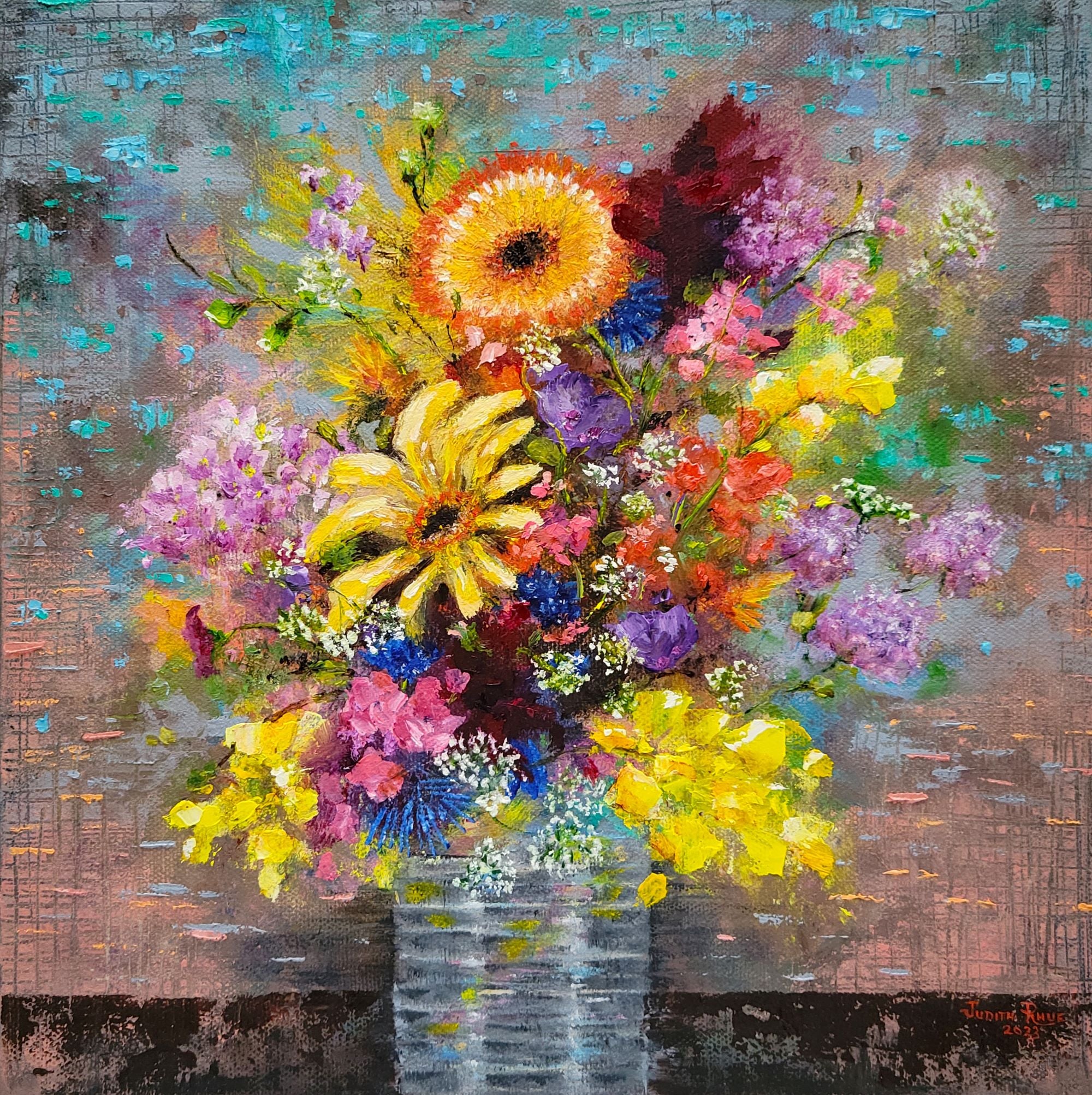Checking out Everything About Oil Paintings: A Guide to Comprehending Their Appeal and Value
Oil paintings have mesmerized target markets for centuries, providing a look right into the imaginative proficiency of different ages. Their rich history is intertwined with ingenious methods and profound psychological expression. Recognizing the materials and approaches behind these artworks can boost gratitude. Furthermore, the market for oil paints presents chances for collection agencies and investors alike. As one explores this fascinating world, the concern arises: what makes an oil paint absolutely important?
The Background of Oil Paint: A Journey With Time
Although oil paint has roots that go back to old times, it genuinely flourished throughout the Renaissance, when musicians found its flexibility and rich shade capacity. Early examples can be traced to the 7th century, with strategies advancing especially across societies. The tool became famous in Northern Europe in the 15th century, particularly via the works of artists like Jan van Eyck, that spearheaded its usage for detailed realism and dynamic colors. This period noted a departure from tempera paints, permitting higher deepness and structure. As oil paint spread, it influenced plenty of musicians, bring about work of arts by prominent numbers such as Leonardo da Vinci and Rembrandt. The medium's heritage continues, shaping the art world well right into contemporary times.
Understanding Oil Repaints: Materials and Techniques
As artists explore the world of oil paints, they run into a diverse variety of products and methods that define this medium. The primary parts of oil paint consist of pigments, which offer color, and drying oils, such as linseed, that bind the pigments and assist in application. Different additives can modify the paint's appearance and drying out time, boosting flexibility. Techniques like glazing, where transparent layers are developed, and impasto, which includes using thick paint, enable different aesthetic effects. Furthermore, making use of brushes, scheme blades, and even fingers can produce special textures and coatings. Comprehending these methods and materials enables artists to completely express their creativity and accomplish the desired influence in their art work.
The Function of Shade in Oil Paintings
Color plays an essential role in oil paints, influencing both visual charm and psychological vibration. Understanding color theory basics, including the partnerships between shades, can boost an artist's capability to convey state of mind and environment. Furthermore, mastering shade mixing strategies permits greater deepness and splendor in a paint's scheme.

Shade Concept Fundamentals
Understanding shade theory is vital for musicians dealing with oil paints, as it creates the foundation for developing visually appealing and harmonious structures. Shade concept encompasses the research study of exactly how shades communicate, the color wheel, and the partnerships in between key, secondary, and tertiary shades. Artists use corresponding colors to improve contrasts and create centerpieces, while analogous colors advertise unity and cohesiveness within an item. Furthermore, the concepts of cozy and great colors influence the assumption of depth and space in a paint. Grasping these concepts allows musicians to control color effectively, assisting the viewer's eye and interacting their intended message. Proficiency of shade concept inevitably improves a musician's ability to convey feelings and ideas with their work.
Emotional Impact of Shade
The emotional effect of shade in oil paintings plays a critical duty in just how customers connect and regard with art work. Shades evoke certain sensations and moods, influencing the customer's mood. Cozy shades like reds and oranges can develop a sense of heat and power, while trendy tones such as blues and environment-friendlies often stimulate peace or self-questioning. Artists purposefully choose color schemes to boost narrative aspects, directing the target market's emotional trip. The saturation and comparison of shades even more intensify these effects, attracting attention and creating focus. Ultimately, the interplay of shades in oil paints not just enhances their aesthetic appeal yet additionally offers as an effective tool for emotional expression, enhancing the visitor's experience and interpretation.
Color Mixing Techniques
While many elements of oil paint add to the overall composition, grasping color mixing strategies is necessary for achieving desired effects and depth. Shade blending can be come close to via various approaches, consisting of the subtractive and additive processes. Additive mixing involves integrating colors of light, while subtractive blending counts on pigments, where shades blend to create new tones. Artists commonly use a limited palette to create unified jobs, recognizing the connections between primary, secondary, and tertiary shades. Strategies such as glazing and scumbling additionally enhance depth and luminance. By masterfully mixing shades, a musician can evoke emotions, create centerpieces, and accomplish a feeling of realistic look, eventually raising the paint's visual and psychological impact.
Famous Oil Painters and Their Iconic Works

Well known for their mastery of shade and strategy, oil painters have developed some of the most renowned art work in background. Distinguished musicians like Vincent van Gogh astounded target markets with his emotive brushwork in "Starry Evening," while Claude Monet's "Impact, Daybreak" prepared for Impressionism. Leonardo da Vinci's "Mona Lisa" remains an enduring symbol of imaginative brilliant, showcasing his skill in catching human expression. Rembrandt's "The Night Watch" highlights his innovative usage of light and shadow. Various other noteworthy numbers consist of Pablo Picasso, who reinvented modern-day art with his vibrant trial and error in jobs like "Les Demoiselles d'Avignon," and Georgia O'Keeffe, whose vivid representations of landscapes and blossoms helped define American innovation. Each musician's special design contributed significantly to the oil painting landscape.
Exactly how to Assess the Top Quality of an Oil Paint
Reviewing the top quality of an oil paint entails a careful evaluation of workmanship methods, along with an analysis of color and composition. Observing brushwork, layering, and the application of paint can reveal the musician's skill degree. In addition, the interplay of colors and the general setup of elements contribute significantly to the painting's visual value.
Assessing Craftsmanship Strategies
A precise evaluation of workmanship techniques is essential for figuring out the quality of an oil paint. Critics ought to first check out the application of paint; thick, textured brushstrokes may recommend an experienced hand, while excessively uniform applications could suggest an absence of deepness. oil paintings for sale. The layering method is additionally important; the visibility of glazes and differed density can boost luminosity and complexity. Additionally, the quality of the products used, such as the canvas and pigments, plays a considerable function in durability and overall visual. Attention to detail in elements like edges and changes between colors shows the artist's commitment to their craft. Ultimately, these methods add to the painting's psychological effect and market value, serving as signs of the musician's ability and intent
Assessing Shade and Structure
While assessing the high quality of an oil paint, one should concentrate on the interplay of color and composition, as these aspects are essential to the artwork's general effect. Color choices can stimulate emotions and develop mood; consequently, the artist's scheme must be taken a look at for harmony and contrast. A healthy composition routes the visitor's eye and develops a feeling of unity. Artists frequently employ techniques like the policy of thirds or leading lines to improve visual interest. Furthermore, making use of light and shadow can add depth, improving the three-dimensionality of the painting. Eventually, a successful oil paint marries color and make-up, engaging the viewer and welcoming a deeper admiration of the musician's vision and strategy.
Caring for and Preserving Oil Paintings
Proper care and conservation of oil website paintings is vital for preserving their integrity and durability. To secure these artworks, it is important to display them far from direct sunshine, which can create fading and staining. Keeping a secure setting with regulated temperature and moisture additional aids in preventing damages. Cleaning should be done gently using a soft, completely dry towel, preventing any type of severe chemicals that might harm the paint or varnish. Routine assessments for indicators of damage, such as flaking or cracking, are a good idea. When storing or delivering oil paintings, appropriate extra padding and framing are required to prevent physical injury. Inevitably, thorough care adds to the visual charm and value of oil paintings over time.
The Market for Oil Paints: Gathering and Investing
Comprehending the market characteristics for oil paintings is important for capitalists and enthusiasts alike. The value of these art work is affected by numerous aspects, including the musician's track record, historical value, and current fads. Collection agencies often look for items that reverberate personally while thinking about possible recognition in worth. Public auctions and galleries function as key venues for acquiring and marketing, with prices varying based upon demand and rarity. Spending in oil paintings calls for research study into the market, as well as an understanding of authenticity and provenance. Furthermore, arising artists might supply possibilities for significant returns, while developed names can command high costs. Overall, a strategic technique to gathering can generate both aesthetic satisfaction and financial incentives.

Frequently Asked Inquiries
What Are the Ecological Impacts of Oil Paint Materials?
The ecological effects of oil painting materials consist of the launch of unpredictable organic compounds (VOCs), dangerous waste generation, and source removal for pigments. These elements add to air pollution and environmental destruction, increasing concerns among eco mindful artists and customers.
Just How Do Different Canvases Impact Oil Painting Results?
Various canvases influence oil paint results considerably. Structure, surface, and absorbency high quality can alter paint application, drying out times, and shade vibrancy. Artists usually pick details canvases to achieve desired impacts and enhance their imaginative expression.
Can Oil Paintings Be Restored if Damaged?
If harmed, Oil paints can certainly be restored. Professional conservators make use of numerous strategies to fix splits, tidy surfaces, and address staining, guaranteeing that the art work maintains its initial charm and worth for future generations.
What Are the Indications of an Initial Oil Painting?
The indicators of an original oil paint consist of noticeable brush strokes, appearance variations, and an unequal canvas weave (oil paintings for sale). Furthermore, authenticity might be verified with provenance, signatures, and the visibility of a varnish layer one-of-a-kind to oil mediums
Just How Has Modern Technology Influenced Modern Oil Paint Techniques?
Innovation has actually greatly affected contemporary oil painting strategies by presenting electronic tools for planning, boosted materials for structure and durability, and online platforms for sharing and marketing art, thus increasing musicians' creative opportunities and target market reach. Oil paint has origins that date back to ancient times, it really thrived during the Renaissance, when musicians found its convenience and rich color potential. The emotional influence of shade in oil paintings plays an essential duty in just how customers link and view with art work. While several facets of oil painting add to the overall make-up, mastering color blending techniques is necessary for attaining wanted results and depth. Reviewing the high quality of an oil painting involves a cautious analysis of workmanship methods, as well as an analysis of shade and composition. While evaluating the quality of an oil paint, one should concentrate on the interaction of shade and composition, as these elements are fundamental to the artwork's total effect.
 Molly Ringwald Then & Now!
Molly Ringwald Then & Now! Marla Sokoloff Then & Now!
Marla Sokoloff Then & Now! Michael C. Maronna Then & Now!
Michael C. Maronna Then & Now! Jane Carrey Then & Now!
Jane Carrey Then & Now! Jeri Ryan Then & Now!
Jeri Ryan Then & Now!